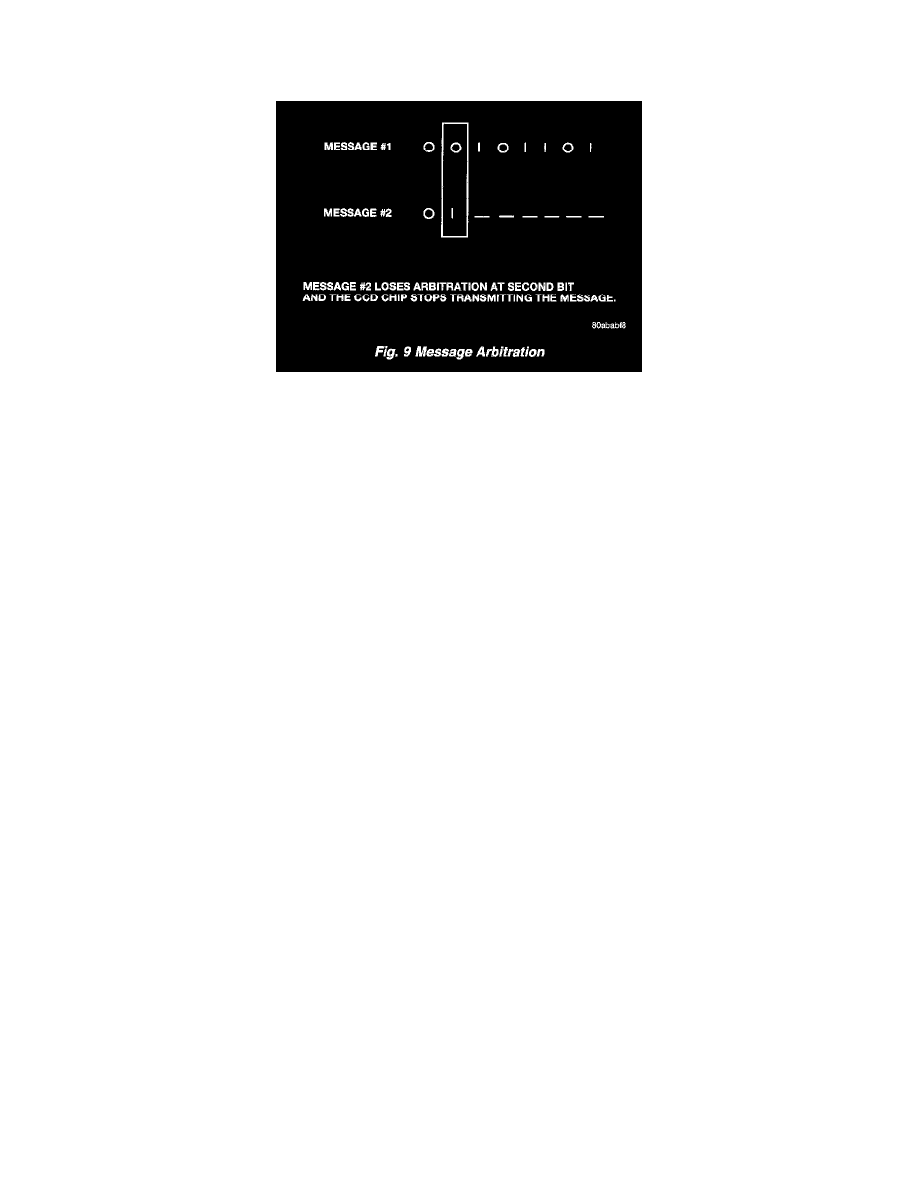RAM 2500 Truck 2WD L6-5.9L DSL Turbo VIN 7 (2001)

chips. Arbitration will occur based upon the priority code, to determine which message takes priority on the data bus and to prevent data collision.
If a CCD chip senses a message of higher priority being transmitted, it stops transmitting its message. The higher priority message is then
transmitted in its entirety without interruption. The other CCD chips on the data bus do not allow any other messages to be broadcast.
Fig.9 Message Arbitration
To determine the winner in an arbitration, all messages start with an ID byte which contains the predetermined priority code. In the digital
broadcast, zero is the dominant bit. All ID bytes start with a zero. This is the start of the message. With zeros being the dominant bit, messages
starting with more zeros have a higher priority. For example: of the two messages below, Message # 2 loses arbitration at the second bit, where
Message # 1 has a zero and Message # 2 has a one. After the message is broadcast, an idle period occurs while all microprocessors can queue, if
necessary, and attempt to broadcast their messages again.
-
Message # 1 = 00010110
-
Message # 2 01010101
Message Identification
Because messages are broadcast over the data bus, all modules can receive them, yet not all modules need all messages. In order to enhance
microprocessor speed, unneeded messages are filtered out. The ID byte, along with showing message priority, also identifies the data, content and
length. The electronic control module, through its CCD chip transceiver, monitors the ID code of the messages. If the message is not for that
particular module, the message is simply ignored. Once the module recognizes a message that it requires, the rest of the message is monitored and
processed.
Transmission Verification
Once a CCD chip transmits a message over the CCD data bus, the message is received by the transmitting module at the same time through the
CCD chip differential transceiver. The module knows the message was broadcast correctly when it receives its own message back. If the message
received does not match the message transmitted, the message is said to be corrupt.
Corruption occurs when the message is incorrectly transmitted on the data bus. Corruption can also occur from interference, wiring problems, or
other data bus problems. In the case of a corrupt message,the module attempts to have the CCD chip re-send the message.
Bus Failure Messages
Short to Battery - Either or both of the bus wires are shorted to a battery potential, or a specific ground circuit may be open.
Short to 5 Volts - Either or both of the bus wires are shorted to a 5-Volt potential.
Short to Ground - Either or both of the bus wires are shorted to ground.
Bus (+) & Bus (-) Shorted Together - The two bus wires are shorted together.
No Termination - The bus system has lost connection with all of its terminators. The Instrument Cluster (MIC) and the Powertrain Control
Module (PCM) supply termination for the 2001 Ram Trucks.
Bus Bias Level Too Low - Either or both of the bus wire potentials are significantly below their normal 2.5 Volts.
Bus Bias Level Too High - Either or both of the bus wire potentials are significantly above their normal 2.5 Volts.
No Bus Bias - The bus system has lost connection with all modules that provide bias. The Instrument Cluster (MIC) provides the CCD bus bias
for the 2001 Ram Trucks.
Bus (+) Open - The bus (+) wire has lost connection with termination and/or bias.
